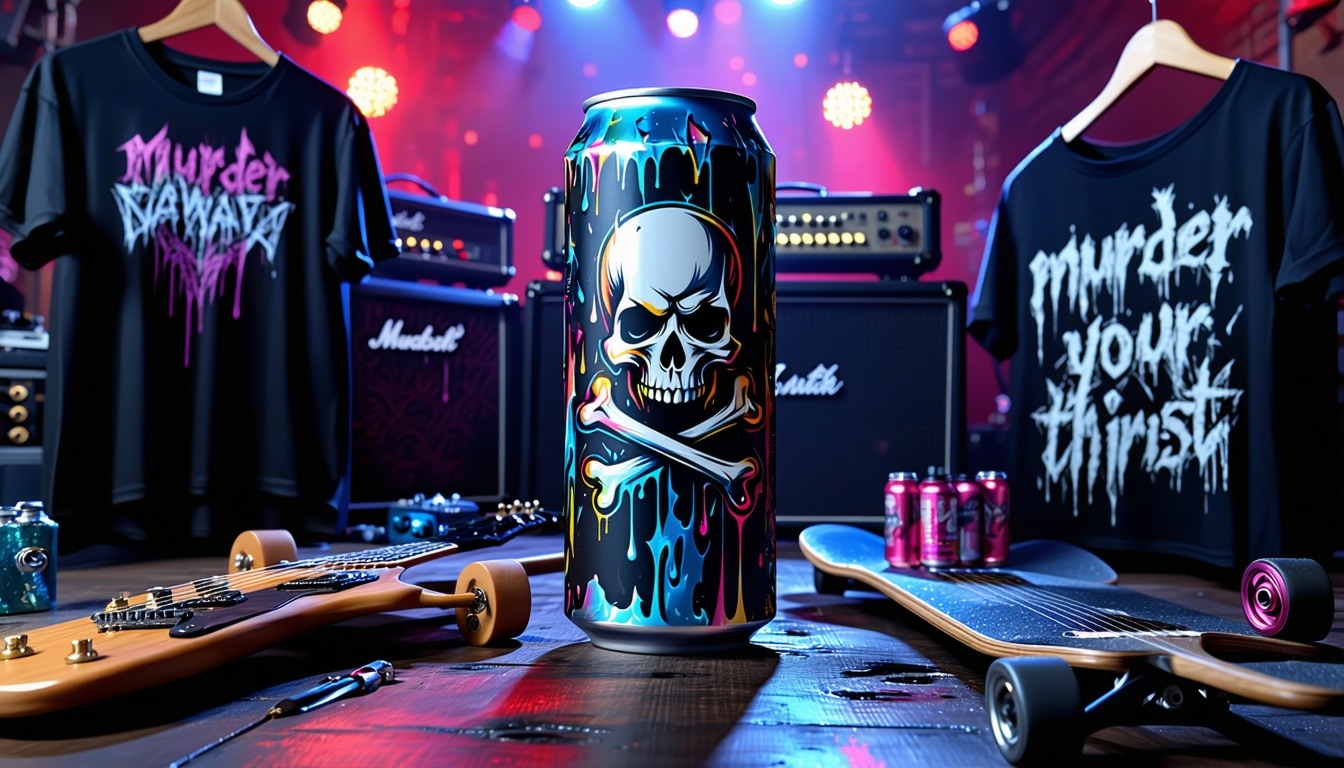
Liquid Death: Disruptive Marketing Strategies for Modern Brands

How does a canned water brand valued at over $700 million explode into a market saturated with established giants like Evian and Fiji?
By doing exactly what no one expects: wrapping water in death metal branding, selling merch that outsells beverages, and creating ads that feel more like punk rock theater than corporate messaging.
Welcome to the Liquid Death playbook—a masterclass in modern, disruptive marketing that breaks all the rules and still wins. In this post, we explore what Liquid Death is doing right and what B2B and B2C marketers alike can learn from its meteoric rise.
The Liquid Death Brand Philosophy: Murder Your Thirst
Liquid Death's branding walks a bold, unapologetic line. Its slogan—"Murder Your Thirst"—sits on top of imagery you’d associate with heavy metal albums, not hydration. But that’s the point.
Founder Mike Cessario**, a former agency creative director, saw a whitespace opportunity: Millennials and Gen Z audiences who were health-conscious but bored to death by bland wellness branding.
Instead of playing it safe, he embraced extremity, irony, and counter-culture values. The result? A brand that:
- Speaks directly to subcultures and fringe communities
- Leverages humor, parody, and absurdity
- Is built around "values-first marketing": sustainability, anti-plastic, and individuality
Content That Doesn’t Feel Like Marketing
One of Liquid Death’s most powerful tactics:** make ads that are so entertaining, you forget you’re being sold to.
Some examples include:
- Hiring a witch to curse the competition
- Certified Cursed Water" campaign** with a full backstory and merch drop
- Collaborations with celebrities like Tony Hawk using actual blood in limited edition skateboards
These aren’t one-off stunts—they’re part of a larger strategy to create "brand theater" and blur the lines between entertainment and commerce.
This approach works because:
- It builds "strong memory encoding" (as neuromarketing tells us)
- It appeals to "emotion and identity" rather than features
- It leverages "earned media": every campaign generates press, shares, and conversation
The Merch-First Mentality
Liquid Death’s success isn’t limited to canned water. Its merchandise—t-shirts, hoodies, koozies, skateboards—represents a massive chunk of its revenue.
This is crucial for marketers to understand:
- The brand itself becomes the product
- Fans buy in not for hydration, but for belonging
Lesson for marketers:
"Your product is only part of the experience. Your brand is the ecosystem."
B2B Takeaways from a B2C Disruptor
Think Liquid Death’s approach is just for edgy consumer brands? Think again. Here’s what even SaaS and B2B marketers can adopt:
1. Category Disruption
- Don’t blend in. Stand out. Even in professional services, tone and storytelling can differentiate.
2. Memory Creation > Awareness
- As neuromarketing shows (see our related post on Quantum Marketing), emotional resonance and memory encoding drive action. Don’t just inform—impact.
3. Build a Brand That’s Fun to Follow
- Your content doesn’t always need to convert directly. It should entertain, educate, or engage. Content is a long-term trust builder.
4. Purpose Matters
- Liquid Death’s environmental mission (aluminum over plastic) gives it credibility. Today’s customers, even in B2B, are increasingly value-driven.
What the Experts Say
- Harvard Business Review (2023): Emotional engagement is the number one predictor of customer loyalty.
- Gartner (2024): Brands that prioritize entertainment and brand purpose will outperform peers in customer lifetime value.
Fast Company (2024): Liquid Death is one of the top examples of Gen Z-centric brand building, combining irreverence with deep mission.
Liquid Death didn’t win by copying bottled water brands—it won by rejecting the entire category's aesthetic.
It teaches us that in the era of saturated attention and cynical consumers, the best marketing doesn’t feel like marketing at all. It feels like content. Like culture. Like rebellion.
And that’s exactly why it sticks.



